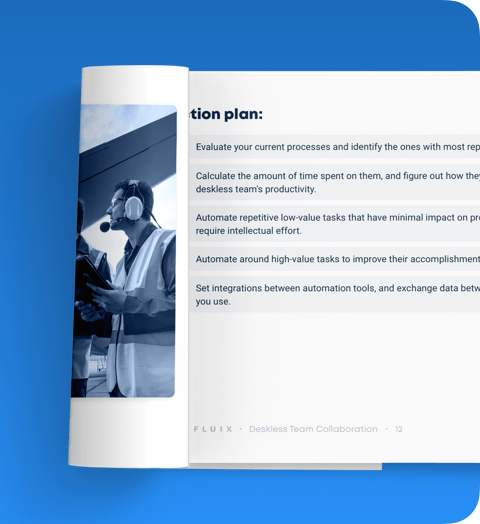Working hours of a remote team project manager can be rather hectic. There are office employees with a more or less fixed schedule. There are field teams with the working hours that often depend on seasonality, night shifts, weather conditions, emergencies.
And there are teams with integrated schedules. Builders, carpenters, electricians, inspectors, etc. can do their tasks before others, or in between, or can’t start their tasks until the others are finished. People may complete their tasks and send reports for approval at 6 am or 10 pm.
Managing all this can be overwhelming unless you build a solid strategy of how to direct your energy and attention. Find below the eight tips for leading remote teams, saving your time, and setting the foundation for high performance.
1. Manage Your Meetings Better
Meetings can be useful for sharing ideas, discussing urgent things and simply bringing people together. Covid and the restrictions imposed by it have generated even higher demand for digital presence, as people were trying to overcompensate the lack of in-person collaboration.
But when too many, with no particular agenda or specific issues to resolve, meetings turn into ineffective use of everyone’s time. The notion of Zoom fatigue or call fatigue has become common in the corporate language, especially among multi-task managers. More companies have started to ban meetings.
While complete banning may be too radical or hard to achieve for some positions (those managing a remote team for example), or within some organization, you still can take less extreme steps to gain more control over your time:
- Scan your calendar for meetings where your presence is unnecessary and doesn’t give you anything. Cut those off.
- Say “No” to invitations to cross-team meetings that are not related to your responsibilities.
- Schedule your own time on the calendar to get work completed without being interrupted.
- Keep one day a week free of any meetings. Use it for brainstorming, discussing the latest news, analyzing the week’s results and reading at least part of the stuff you’ve been adding on your to-read list.
For cases when you do have a meeting, design them in such a way so that to maximize the opportunity. Create a planned agenda and questions for discussion, select people essential to the meeting, agree what decision you’re looking forward to making, and how you can brief others who are not attending.
2. Find the Optimal Tool for Communication
With the rise of instant messaging, many teams switched to tools like Slack and Trello for discussions and listing completed tasks. They can be life-savers, but the non-stop communication they offer can often be a distraction from getting work done. Using special project management tools like Fluix, Autodesk or Procore instead can be a good alternative for managing teams remotely.
For you as a manager, such tools allow you to see the status of each process without having to ping each team member or arrange check-in calls. You automatedly send the necessary info to project participants from any team or division, with all the project data linked.
Your team, on the other hand, instantly sees new tasks on their device, knows who is responsible for what task, sees the progress, and doesn’t reach out to you for clarifications each time they receive a new appointment.
To be fair, even having such tools, you’ll most probably be using email anyway. So mastering business writing skills would be useful. When composing any message, respect your team’s time, avoid overly vague questions and try to keep it maximally short and informative. Promote a strong written communication culture within your organization, and educate people on well writing.
3. Automate Low-Value Tasks
Not all tasks can be automated. A manager needs to attend meetings, hold safety talks, onboard newcomers, show inspectors around the site, develop strategies, and make tons of decisions that require attention and brainwork.
However, there are many low-value tasks that modern tech can help you with. They have minimal impact on your business, clients and major processes, and don’t demand complex intellectual effort.
Email status updates can be automated. Document distribution can be automated. Form submissions and approval processes can be automated. Moving data can be automated. Any friction point that slows a process down or creates a bottleneck should be on your list for automation.
Having employees fill out their timesheets, distributing reports, or processing invoices can be done with proper software faster and more accurately. Many software support integrations meaning you can exchange data between them without manual effort every time. Set the integration once, define the conditions and save your time and energy.
Best Practices for Deskless Collaboration
- A guide & action plans
- 5 templates
- 10 tools
- 25 evaluation questions


4. Reserve Time for Deep Work Sessions
Managing a remote team presupposes using digital tools that can be real time-savers. At the same time, non-stop messaging can become a distraction, stealing focus when you need to do a task requiring more than 5 min of concentration: read a long document, check multi-page reports, write something that requires concentration. App notifications can cause constant interruptions, pulling you out of the flow.
If you know that in the upcoming days you need some hours uninterrupted, schedule them in your calendar as an event. Mute your notifications, put away a smartphone, or get it into flight mode. Let your colleagues know you’re unavailable with the help of a Slack status.
Sometimes, what prevents us from getting started with a big thing isn’t the outside interruption but a fear of hard work. Break the whole project down into really small chunks, 30 minutes each, set a timer, and go to work. Note that it may work better with an actual clock (sand clock maybe) rather than a smartphone that’s better to be put out of reach.
5. Be a Better Remote Worker
Working from home may give you more flexibility and energy: you don’t spend time on getting dressed, packing your things, commuting, etc. But if the work-life balance isn’t supported, the effect can be the opposite.
- Have one day in the office.
Choose one day and go to the office to handle things that are better handled in person: onboard new hires, discussing urgent things with colleagues, brainstorming in front of a whiteboard, and chatting in the office kitchen. Many dynamic things can come from simply talking to people face to face, watching their body language, considering the tone of voice.
- Give your work day a structure.
Create routines and boundaries, separating work from the rest of your life. Give your work a definite start and end, starting at the same hours, stopping work at a specific time. Take breaks throughout the day and reserve them for actual rest and not for checking your mail from a different location in the house.
- Keep your availability explicit.
When you work with people in one location, you can tell when it’s ok to talk to them because you literally see what they’re doing. When you’re remote, a green icon in the corporate messenger is often the only thing that can signal one’s readiness to communicate. When it’s active, most people would assume that you’re open for instant communication.
However this icon may be the same green when you’re having a scheduled or unscheduled meeting, working on an urgent project, or having a long-form working workflow.
Unless your position doesn’t require availability as a default state, use status updates. For example, Slack lets your set any custom status like In a Meeting, Sick, On a Business Trip, Lunch, etc., and help your teams better manage your communication.
6. Take Days Off in a Bad Weather
Some projects in construction, roadbuilding, wind farm maintenance, and other field industries are weather-dependent.
When the weather prevents outdoor work, and your site crews have a day off, take a day off for yourself as well, even if you typically work from the comfort of the office. A tired worker working under the rain and wind is more prone to accidents. A tired manager is also prone to errors and miscalculations, so if you don’t have any really urgent emergencies, take a rest when your crews have.
When the bad weather is over, your workmen will likely be working overtime, and so will you, regardless of whether you had previous days off or not.
7. Focus on Things Done not Hours Spent
By emphasizing hours worked rather than results achieved, you often make yourself work long past the point of optimal productivity. The fact that you’re sitting with your laptop open, doing things, checking messages and catching up with the news doesn’t mean you’re making progress with your project. Appearing productive and being productive are different things, and an amount of hours worked isn’t a badge of honor.
This doesn’t mean you need to lower your expectations of productivity. But it’s smart to use your time wisely, and save energy and intellectual effort for high-value tasks. Identify what use of your time really matters to your goals and the goals of your organization, and then manage lower-priority tasks keeping this in mind.
Get rid of the stereotype that any time spent at rest is “lazy” or “wasted.” Reserve hours for thinking things over, and digesting the ideas and concepts you’ve been consuming over weeks. Your goal should be delivery of the project within the deadline, with the best quality possible, and not how many hours you worked each day.
8. Delegate Responsibilities
It’s a problem for many managers to let things go, and give people flexibility, let them be responsible for things. Many think they know it better, and therefore are required to monitor each and every task, even the most minor.
But just because you’re good at something – be it preparing quick reports, creating spreadsheets with conditional fields, or proofreading agreements – doesn’t mean you need to do everything by yourself. Rely more on your team. Find out what’s the best use of your time, and where you can afford losing the grip.
The job of a manager is to give people a goal, and let them solve the problem in their own way. There is usually more than one way to do so, and if you hire good professionals, they know what to do.
Situations differ, and there will be emergent times when you need to work extra hours, stay late in the office, or skip a meeting with friends because you have a job to do. But if such emergencies happen every week or even day, you need to carefully think your working strategies over.
Distributed team management is a complex thing, so maybe in the beginning you may need extra help from experts on where to get started. We at Fluix will be happy to help manage your time and energy better using modern tech solutions.




